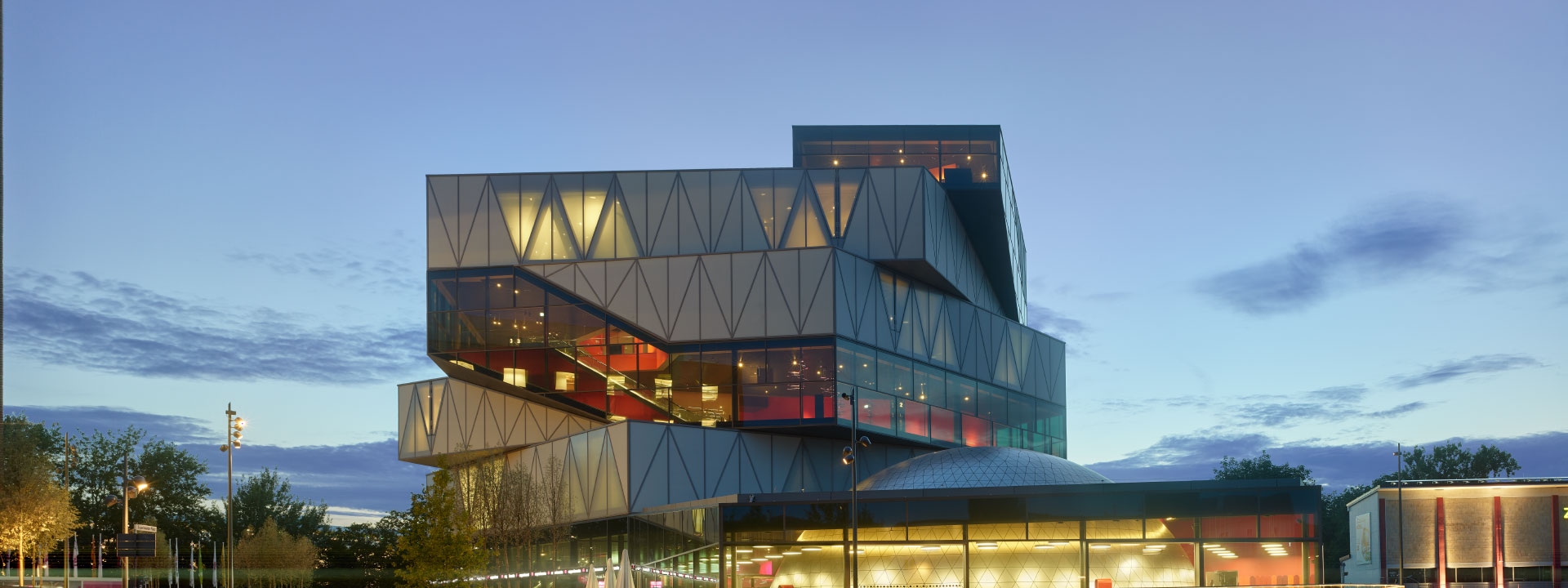750 panes of glass in 700 different shapes for Germany's largest science center
The city of Heilbronn’s new landmark, the Experimenta Science Center, rises 40m into the sky. A spectacular new building made of steel and glass, it offers an innovative world of knowledge and experience for all age groups, unique in Europe, holding an exhibition space of some 25,000sqm. The Science Center unites a planetarium, theater and research worlds, allowing visitors to encounter knowledge: virtual travel through space, fascinating laser and experiment shows, an observatory with powerful telescopes, and researcher worlds for a wide variety of experiments.
Set on an island in the River Neckar, the new building was designed by architecture practice Sauerbruch Hut-ton and impresses with its sculptural exterior. Conceived as a helical sequence of spaces, the building con-tains six stories, comprising offset, transparent structural shells with five facades each. The building envelope is every bit as varied and innovative as its 275 interactive exhibits and Experimenta’s experience worlds. sedak supplied 750 glass facade sections in 700 different shapes for Germany's largest science center. The glass facade design takes inspiration from the theme worlds behind it, alternating between opaque and transparent sections. These sections constantly surprise the visitor with new views of the city and landscape. The facade lights up in varied tones, depending on the screen print, season or time of day. At night, the building blazes with warm colors emitted from its interior.
The complex facade glass sections showcase virtually all of sedak's finishing expertise with ceramic full-coverage or dot matrix printing applied to most of the glass sections. The dots vary in size, the smallest being 2mm in diameter with a gap of just 1.2mm between them. The colors of the individual dots do not run into each other thanks to sedak's precise ceramic digital printing process.
There are also different triangular shapes with acute angles of less than 20 degrees amid the various discs. This was the first time that sedak produced such angles fully automatically on its insulating glass line. One of the challenges the project posed was precise production coordination to ensure efficient installation of the glass sections on the construction site despite the variety of shapes and dimensions.


